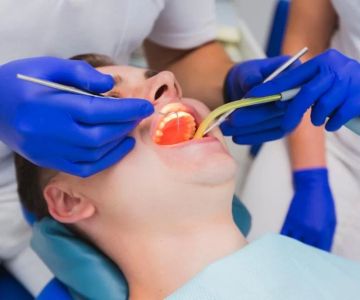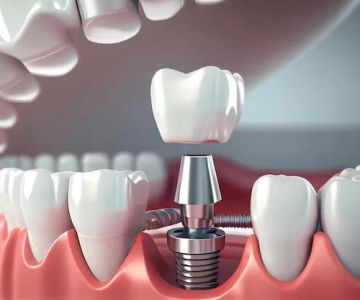Recognizing the Symptoms of Gum Disease: Early Signs and Treatment Options
- 1. What Are the Symptoms of Gum Disease?
- 2. Early Signs of Gum Disease You Shouldn't Ignore
- 3. Causes and Risk Factors for Gum Disease
- 4. Effective Treatment Options for Gum Disease
- 5. Prevention Tips to Protect Your Gums
1. What Are the Symptoms of Gum Disease?
Gum disease, also known as periodontal disease, is a common but serious condition that affects the gums and the structures supporting the teeth. Early recognition of gum disease symptoms is crucial to prevent further complications. Common signs include swollen, red gums that bleed during brushing or flossing, persistent bad breath, and receding gums. If left untreated, gum disease can progress to more severe stages, leading to tooth loss.
2. Early Signs of Gum Disease You Shouldn't Ignore
One of the first noticeable symptoms of gum disease is bleeding gums. This often happens when brushing or flossing and is a sign that your gums are inflamed. Other early signs include a change in the color of your gums from healthy pink to a dark red, tenderness or discomfort in the gums, and gums that pull away from the teeth, exposing more of the tooth surface. It’s important to take action as soon as you notice these signs.
For example, one user, Sarah, noticed her gums started bleeding every time she flossed. Initially, she dismissed it as normal, but as the bleeding continued, she visited a dentist and discovered she was in the early stages of gum disease. Early intervention helped prevent further damage, highlighting the importance of addressing symptoms quickly.
3. Causes and Risk Factors for Gum Disease
Gum disease is caused by the buildup of plaque, a sticky film of bacteria that forms on the teeth. If not removed through regular brushing and flossing, plaque can harden into tartar, leading to gum irritation and infection. Risk factors include poor oral hygiene, smoking, certain medications, genetics, and conditions such as diabetes or pregnancy. Understanding these factors can help you take preventive measures.
For example, individuals with diabetes are at a higher risk of developing gum disease due to a weakened immune system. Managing such underlying conditions is vital in preventing gum-related issues.
4. Effective Treatment Options for Gum Disease
Treatment for gum disease varies depending on the severity of the condition. In the early stages, a professional cleaning to remove plaque and tartar buildup may be sufficient. For more advanced cases, scaling and root planing, a deeper cleaning procedure, may be necessary. In some cases, surgical treatments, such as flap surgery or tissue grafts, may be recommended.
It’s essential to follow the treatment plan prescribed by your dentist. For instance, Tom, a regular smoker, suffered from advanced gum disease and required a series of treatments, including deep cleanings and medications. His dentist also advised lifestyle changes, such as quitting smoking, which significantly improved his gum health over time.
5. Prevention Tips to Protect Your Gums
Preventing gum disease is much easier than treating it. The most effective prevention strategy is maintaining good oral hygiene. Brush your teeth at least twice a day with fluoride toothpaste, floss daily, and visit your dentist regularly for checkups and cleanings. Additionally, avoiding tobacco products and eating a balanced diet can help keep your gums healthy.
If you're looking to improve your gum care routine, consider using products that promote gum health. For example, natural toothpaste designed to fight plaque buildup or mouthwashes containing antibacterial ingredients can provide added protection. You can explore these products at Dentistry Toothtruth for more personalized recommendations.







 Alliance Orthodontics4.0 (23 review)
Alliance Orthodontics4.0 (23 review) Growing Smiles of Voorhees4.0 (2464 review)
Growing Smiles of Voorhees4.0 (2464 review) Dr. David Miller DDS5.0 (1 review)
Dr. David Miller DDS5.0 (1 review) Michael C. Byars, DDS5.0 (67 review)
Michael C. Byars, DDS5.0 (67 review) West Loop Dental Associates4.0 (24 review)
West Loop Dental Associates4.0 (24 review) David A. Goodman, DMD Alan C. Ko, DMD Advanced Cosmetic & Prosthetic Dentistry5.0 (333 review)
David A. Goodman, DMD Alan C. Ko, DMD Advanced Cosmetic & Prosthetic Dentistry5.0 (333 review) The Importance of Oral Health Education During Pregnancy for a Healthy Pregnancy
The Importance of Oral Health Education During Pregnancy for a Healthy Pregnancy Best Tips for Brushing Your Teeth Properly for Healthy Gums: Essential Techniques for Oral Health
Best Tips for Brushing Your Teeth Properly for Healthy Gums: Essential Techniques for Oral Health Why Skipping Dental Checkups Can Lead to Bigger Oral Health Problems
Why Skipping Dental Checkups Can Lead to Bigger Oral Health Problems Advantages of Porcelain Dental Restorations
Advantages of Porcelain Dental Restorations How Can Diabetes Cause Tooth and Gum Problems? Preventing and Managing Oral Health Issues
How Can Diabetes Cause Tooth and Gum Problems? Preventing and Managing Oral Health Issues Healthy Habits for Promoting Good Oral Health and Hygiene: Tips for a Healthy Smile
Healthy Habits for Promoting Good Oral Health and Hygiene: Tips for a Healthy Smile